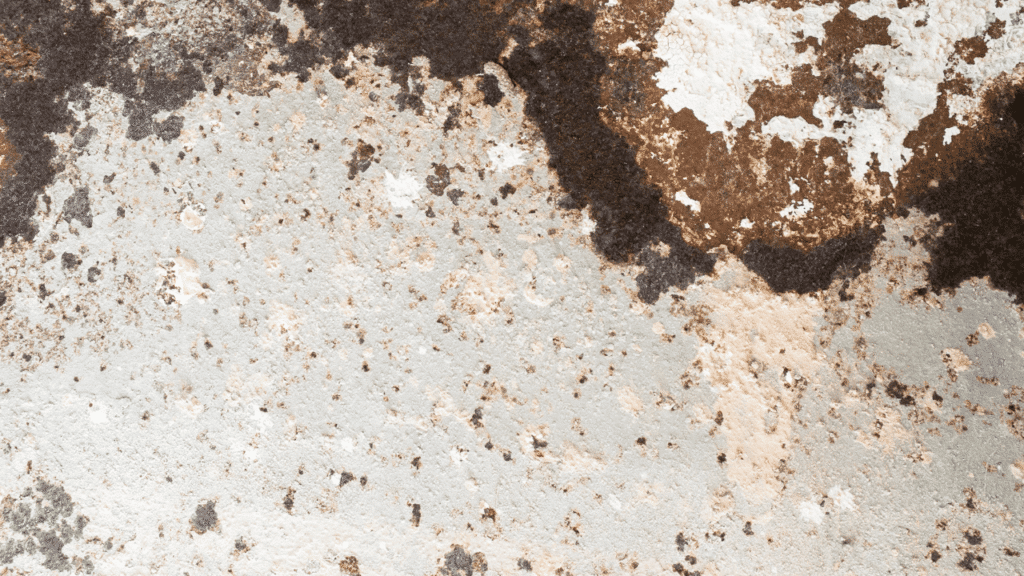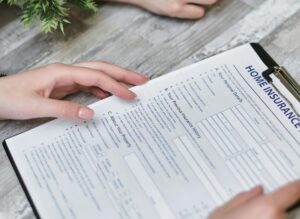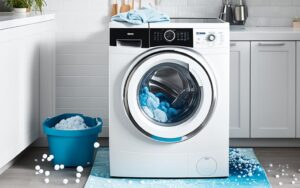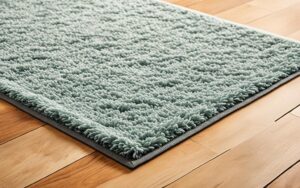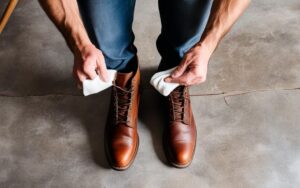How to Clean Black Mold? Molds are a type of fungi that can be found both indoors and outdoors. They reproduce by releasing toxic black mold spores into the air, which can cause allergic reactions or even asthma attacks in some people. They even cause structural damage to buildings over time.
They have been around for millions of years and were one of the first life forms to appear on Earth. They are so resilient that they can even survive in outer space!
However, while some species of molds can be beneficial in certain situations, some can also pose a serious health risk if they are allowed to grow and proliferate indoors.
In the below article, we’ll discuss a brief guide on how to remove mold. So let’s dive in;
What is black mold and where does it grow?
Black mold is a type of fungus that thrives in wet, humid environments, such as bathrooms, kitchens, windowsills, and basements. It often appears as a black or greenish-black slimy substance.
It grows on surfaces that are damp and have a lot of organic matter, such as wood, paper, wallboard, insulation, and ceilings. It can also grow on food products.
How To Clean Black Mold?
1. Identify if the mold is black

For black mold removal, it’s important to first determine if the mold you are dealing with is black mold or some other type of common household fungus.
Black mold is usually accompanied by a strong musty odor and can be dry or sticky to the touch. Other signs of black mold include fuzzy, thread-like growth and black, glassy spots.
- Look for black or greenish-black slime
- Check for a musty odor
- See if the mold is growing on damp surfaces
- Inspect for organic matter on which the mold is growing
- Smell the mold to see if it has a musty odor
- Use a flashlight to look for signs of mold growth in dark areas
2. Gather supplies including a respirator, goggles, gloves, and a bucket

When cleaning up any mold, it’s important to wear protective gear yourself from potentially harmful mold allergies. Here are the supplies you’ll need to do so:
- Respirator: A respirator will protect your lungs from inhalation of mold spores. Make sure to select a respirator that is approved for use against black mold. If not at least use mask.
- Spray Bottle: A spray bottle can be used to apply an anti-fungal cleaner to moldy areas.
- Goggles: Goggles will protect your eyes from contact with mold spores and other debris.
- Rubber Gloves: Gloves will protect your hands from contact with mold and debris.
- Bucket: A bucket will be used to collect the removed mold.
- Others: Include brush, sponge, warm water and solution mentioned below.
3. Remove any items that are in the area where the mold is located
Before you begin cleaning up the mold, it’s important to remove any items that are in the area where it is located. This will help ensure that the mold doesn’t spread to other parts of the room.
You can either move the items to another room or place them in a sealed plastic bag until you have finished cleaning up the mold.
4. Mix one gallon of water with one cup of bleach in the bucket

> For black mold on painted surfaces:
To clean black mold from painted surfaces, you’ll need to mix one gallon of water with one cup of baking soda in a bucket.
For kitchen surfaces, it is important to be extra careful when choosing cleaning products. Many common household cleaners contain harsh chemicals that can encourage mold growth.
> For black mold on non-painted surfaces:
Mix one gallon of water with one cup of borax in the bucket. Using a sponge or a cloth, apply the mixture to the surface. Let it sit for 10 minutes, then rinse thoroughly with clean water.
> For Bathroom Surfaces:
To prevent black mold in the bathroom, it is important to regularly clean and disinfects your surfaces using a mixture of one gallon of water with one cup of bleach. This will help keep the bathroom free from harmful mold growth and reduce the risk of allergy symptoms or infections.
5. Scoop up some of the diluted bleach mixtures and start scrubbing the black mold off the surface using a brush or sponge

When using the bleach mixture to clean surfaces, be sure to wear gloves to protect your hands. Apply the solution to the black mold using a brush or sponge, and scrub until it is removed. Rinse the surface with clean water after cleaning.
You may also want to consider using your hands for narrow spots or hard-to-reach areas. Simply scoop some of the bleach mixtures onto your hands and apply it directly to the mold. Scrub gently until the stain is removed, then rinse thoroughly with clean water.
6. Rinse off the surface with clean water

After cleaning the surface with the bleach mixture, be sure to rinse it thoroughly with clean water. This will help remove any remaining bleach and prevent any damage to the surface.
If a surface is sensitive to water, be sure to use damp cloth to swipe all dirty foam.
7. Prevention of Mold From Coming Back
To prevent black mold from coming back, it is important to address any underlying issues that may be causing or contributing to its growth. This could include cleaning and repairing leaks, adequately ventilating the area where the mold formed, or improving airflow in your home.
Additionally, you may want to consider using a dehumidifier or air conditioning unit to help improve moisture levels and reduce humidity. Maintaining good hygiene by regularly cleaning surfaces and keeping your home clean can also help prevent mold growth over time.
Spray a solution of 1 cup of water mixed with 1 teaspoon of tea tree oil on such areas to avoid mold growth over time.
Finally, you should take care to regularly inspect any areas of your home that are prone to moisture or water damage, and make repairs as needed to prevent future problems. By following these tips, you can help keep your home safe from black
What kills mold permanently?
Mold can be killed using a variety of methods, but the most effective way to kill mold and prevent it from coming back is by using a commercial fungicide. Fungicides are available at most hardware stores, and they come in both spray and liquid form.
When using a fungicide, be sure to read the instructions carefully and follow all safety precautions. Always wear gloves, goggles, and a respirator when working with fungicides.
Is bleach or vinegar better to kill mold?
Both bleach and vinegar can be effective at killing mold, but vinegar is a less harsh alternative.
If you are worried about the toxicity of bleach, or if you are trying to remove mold from a surface that cannot be cleaned with bleach, vinegar can be a good alternative. However, vinegar may not be as effective as bleach at killing mold and preventing it from returning.
The Bottom Line
Black mold growth can be a serious problem, indoors and outdoors. It is important to know how to identify it, and how to remove it safely with a bleach mixture.
Be sure to read the entire article for more tips on how to use this solution effectively.
